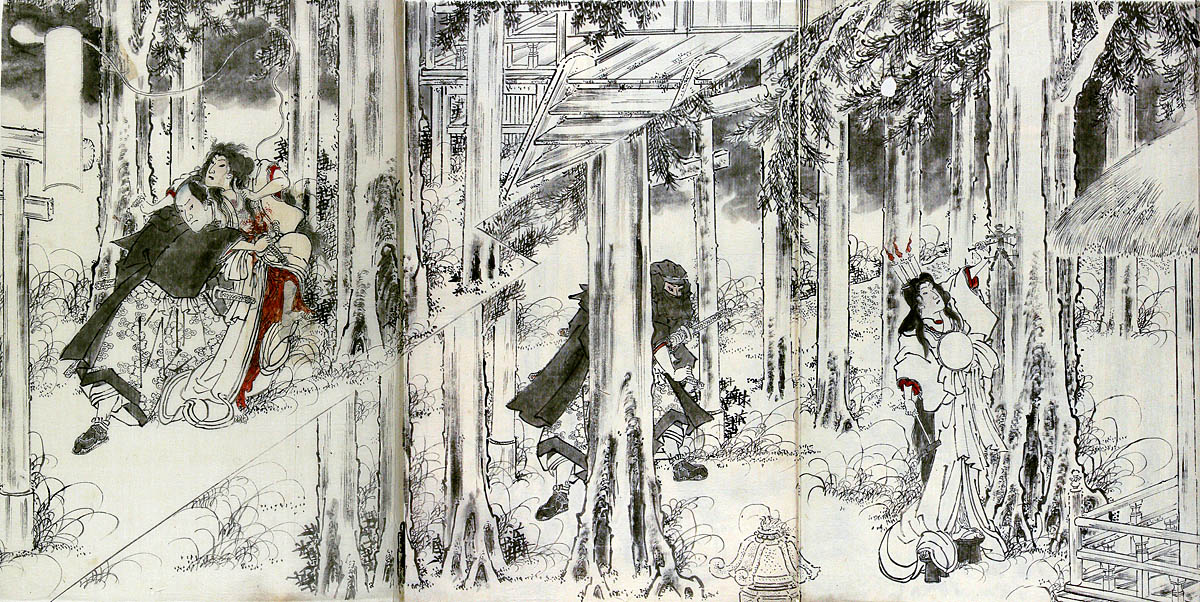|
return to the archive's SURIMONO overview |
 of items sold in the past |
view print |
|
return to the archive's SURIMONO overview |
 of items sold in the past |
view print |
|
The following description is a quote from the lavishly produced book, edited by John T. Carpenter (pls. see below): "Against a jet black sky, a palace guard in the court of Emperor Konoe (1139-55) poses with a large bow. Beside him is his adversary, TAMAMO-NO-MAE, a court lady who won the emperor's affections, but who in reality was an evil fox that had temporarily transformed itself into human form. The artist has depicted Tamamo-no-mae wearing a flowering robe. The train appears to cover nine tail-like appendages, indicating the lady's actual identity as a nine-tailed fox. According to popular legend, to win the heart of the emperor and eventually take over the throne, the fox spirit transformed itself into Tamamo-no-mae, an entrancingly beautiful and sagacious court lady. The emperor was completely captivated and wanted to make her his chief consort. Soon, however, he began to feel ill. No one could identify the cause until ABE NO YASUCHIKA, a court astrologer, revealed that the monarch was stricken by a curse placed on him by the fox. When Tamamo-no-mae's intensions were exposed, she escaped ...", how, finally, she was tracked down and killed is shown: in the highly interesting hanshita-e (finished preparatory drawing) for a print triptych by Utagawa YOSHITORA in the DRAWINGS section of our web gallery:  Reference: - John T. Carpenter, "Reading Surimono - the Interplay of Text and Image in Japanese Prints", Museum Rietberg, Zurich; Leiden / Boston 2008; pp. 186-187, no. 61. - Ch. van Rappard-Boon, "Hokusai and hos school"; Amsterdam: Rijksmuseum, 1982, no. 238. - Asano Shugo, "Suijintachi no okurimono: Edo no surimono", Chiba City Art Museum; 1997, no. 176. |